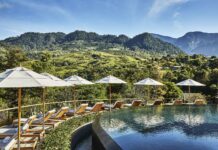Canada’s fifth largest province by population, Manitoba is more than twice the size of England, Scotland, Wales and Ireland combined. The outdoor enthusiast who visits Manitoba will find a landscape dominated by boreal forest and water – for instance, the massive Lake Winnipeg along with Lake Manitoba and thousands of smaller lakes and rivers.

Like its sister prairie province of Saskatchewan, Manitoba does not offer a lot of choice on the spa scene but boasting 52 provincial parks, the province prides itself on all it has to offer the wellness-minded travel with a love for the great outdoors. For instance, the province boasts 1,300 kilometers of trails for hiking, cycling and cross-country skiing.
Things you should know before you go:
• Winnipeg is the provincial capital and the largest city in the province.
• The destination boasts more than 2,300 hours of bright sunshine each year.
• Churchill, Manitoba, is known as the Polar Bear Capital of the World and positions itself as being the most accessible place to view polar bears in the wild.
• Manitoba is famous for its caviar. The province produces more than 25,000 pounds of gold medal, award-winning golden caviar from Whitefish roe.
• Assiniboine Forest in Winnipeg is the largest urban nature park in Canada and home to 80 species of birds.
WINNIPEG
The capital city of Winnipeg is a green city with plenty of trees and a wide expance of prairie sky. Located at the junction of two historic rivers – the Red and the Assiniboine – that wind their way throughout the entire city, Winnipeg offers visitors lots of green spaces. In the heart of the city, a nine-acre oasis is perfect for walking and cycling along a tree-lined river walkway. Winnipeg is also home to one of one of the largest urban forest parks in Canada – the Assiniboine Forest – where you can walk or cycle through forest trails. Assiniboine Park is also a wonderful place to cycle or walk through gardens, such as the Leo Mol Sculpture Garden.











